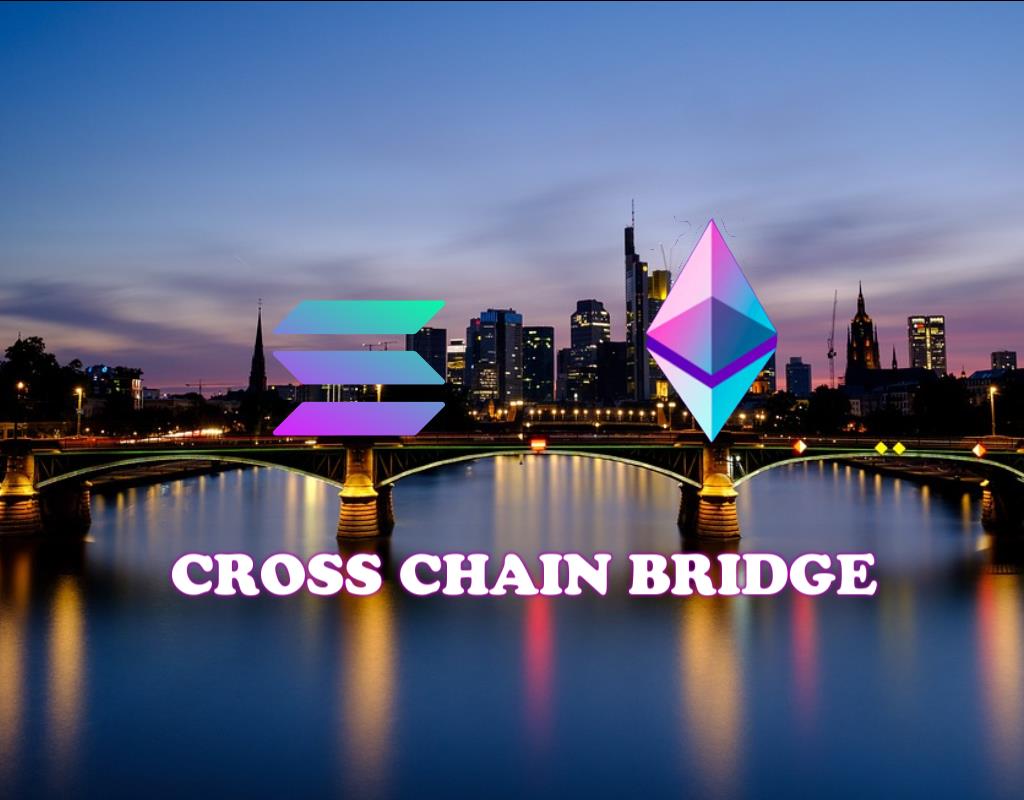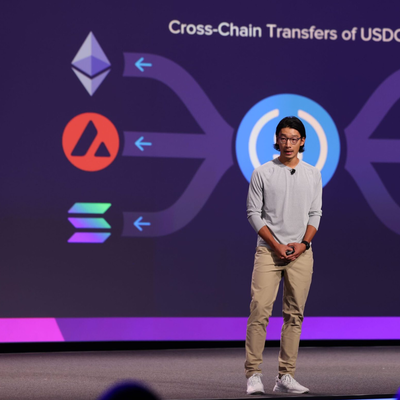What is Cross-chain Bridge? How do blockchains connect to each other?
Cross-chain bridge is considered a solution to connect between blockchains. Today, let's learn about Cross-chain bridge with FoxCryptoNews!

What is a cross-chain bridge?
A cross-chain bridge is a bridge connecting multiple independent blockchains. You can think of a Cross-chain bridge as a 'middle man' that connects two different blockchains and allows users to transfer tokens, use smart contracts, exchange data and use other functions.

Why was Cross-chain bridge developed?
The limitations of long-established blockchains like Ethereum and Bitcoin have encouraged the development of newer platforms. These new chains offer benefits such as cheaper transaction fees and higher network throughput. However, there is an issue of concern here that users cannot seamlessly migrate assets from old blockchain platforms to new blockchain networks.
Assuming you need to transfer assets from Ethereum to Polygon without using Cross-chain bridge, you need to transfer assets to CEX exchanges and then withdraw assets to Polygon. When you want to transfer assets from Polygon back to Ethereum, you need to perform the same operations again. This is generally invisible and takes a lot of time for users. Cross-chain bridge is developed to help users move assets between blockchains more easily, conveniently, and quickly.
How does a cross-chain bridge work?
Cross-chain bridges operate by one of the following three mechanisms:
- Lock and mint : When tokens are sent from Chain A to chain B. Users lock tokens in smart contracts on chain A, then wrapped versions of those locked tokens are minted on chain B as an IOU. In the opposite direction, the tokens wrapped on chain B are burned to unlock the original tokens on chain A.
- Burn and mint : When tokens are sent from Chain A to chain B. Users burn tokens on chain A, then the same native tokens are issued (minted) on chain B.
- Lock and unlock : When tokens are sent from Chain A to chain B. Users lock tokens on chain A, then unlock the same native token from the liquidity pool on chain B. Cross-chain types This bridge typically attracts liquidity on both sides of the demand through economic incentives such as revenue sharing.
To better understand the working mechanism of Cross-chain bridges, you can refer to the example below:

- Send USDC from Chain A to Chain B
Cross-chain bridge will lock user's exchange account in Chain A, then issue Wrapped USDC in Chain B.
- Send USDC from Chain B to Chain A
Conversely, a Cross-chain bridge will burn wrapped USDC in chain B, then unlock user assets in Chain A.
Cross-chain bridge classification
Centralized Bridge
Centralized bridge has centralized control authority. This type of bridge allows users to receive funds from any blockchain in a 1:1 ratio. Cryptocurrency exchanges lock users' assets and offer similar assets in other networks. When it is necessary to return a token to the original chain, new coins will be burned and the native tokens will be unlocked. As a rule, this type of bridge requires mandatory KYC .
Decentralized Bridge
With a decentralized bridge, there will not be an intermediary unit in the middle of processing transactions for users. This type of bridge uses a smart contract that connects different chains. Token exchange is performed automatically if the conditions of the smart contract are met.
Asset locking is done in the original blockchains, a similar amount is created in the second blockchains. When coins are burned on the second blockchain, customers receive them on the original network. The price of the token does not change per network because it is tied to the price of the original asset. The decentralized bridge does not require users to go through KYC procedures and does not collect user data.
The risks of cross-chain bridge projects
Steal user money
For a centralized bridge, the project operator can cheat and steal users' funds. Some bridge projects have introduced solutions to control and prevent managers when they detect that they have bad behavior that affects users.
Attacked by hackers
Decentralized bridges are developed with the aim of reducing trust assumptions and providing users with greater security. Blockchain trustless bridges use oracle and smart contracts to manage assets.
However, smart contracts can always be exploited. In the 10 biggest hacks of the cryptocurrency industry in 2022, there were 4 hacks related to cross-chain bridges such as Ronin Network, Wormhole, Nomad, Harmony with a total loss of more than 1.2 billion USD.

Some outstanding Cross-chain bridge projects
Multichain
Multichain is a cross-chain bridge that supports up to 72 chains, including most of the major blockchains on the market today. Multichain is a cross-chain bridge project with the largest daily transaction volume at the moment, up to 29.1 million USD.
Stargate
Stargate is the first cross-chain bridge built on Layer Zero. This project currently supports users to move assets between 7 chains, including: Ethereum, BNB Chain, Avalanche, Matic, Arbitrum, Optimism, Fantom.
Synapse
Synapse is also a notable project in the area of Cross-chain bridge. Synapse has released V2 with many outstanding features such as: Generalized cross-chain messaging, Optimis verification.
Celer cBridge
Celer cBridge is a decentralized cross-chain bridge, and supports up to 36 chains, 14 different tokens.
summary
Through this article, you must have somewhat grasped the basic knowledge about cross-chain bridge. FoxCryptoNews see you in the following articles.
Nov 16, 2022














